- Home
- Isaac Asimov
Asimov’s Future History Volume 20 Page 15
Asimov’s Future History Volume 20 Read online
Page 15
Part 9: The Far Star
GOLAN TREVIZE AND the other members of the Comporellian engineering team followed Kuel Denrun as he led them up a moving stairway to the Ministry of Transportation’s roof garage. After a brief exchange with a black-uniformed guard, Denrun led them to a large conveyance. The others filed into the back, while Trevize joined Denrun at the front. Denrun conferred with a traffic controller, and a large hinged door opened out into the cold Comporellian afternoon. Denrun flew them out into the daylight, then set the controls on automatic and let the vehicle’s computer fly them to the spaceport.
Once at the spaceport, Denrun resumed control of the vehicle and landed them thirty meters from the Far Star. He looked at her through the front windows and said, “She’s a beauty.”
“She is indeed,” said Trevize. The ship had seen him through thick and thin for the last six months. It had become more of a home to him, he realized, than any of the apartments he had lived in since leaving the Navy. Lately, it had even come to feel as though the ship and he were growing together, becoming parts of a single organism. For a moment, he wondered if being on Gaia had somehow changed the ship, made it part of the Gaian collective consciousness. But Bliss had assured him that it would have required a stay of years, even decades, before an inert Isolated object like the Far Star could be absorbed into the Gaian consciousness. Even Janov Pelorat would never truly become a part of Gaia, even if he spent the rest of his life there, which seemed likely to actually happen. Trevize finally decided that any symbiosis between the ship and himself was all on his part, the same sort of bond that had developed between people and the machines they worked with since before the dawn of recorded history. He felt a momentary impulse to ask Janov about it before he remembered that Janov was unavailable. “I’ll miss you, my friend,” he thought silently to the historian.
“How does she handle?” said Denrun, interrupting Trevize’s reverie.
“Like a dream,” said Trevize. “She enters hyperspace so smoothly you don’t even notice the Jumps. The ship’s computer can calculate Jumps so quickly you could travel from here Terminus by way of Trantor in less than an hour.”
Denrun gave a low whistle. Gesturing with his hand, he said, “Lead the way.”
Trevize felt a twinge of conscience as he led the Comporellian engineering team into the airlock of the Far Star. Despite the way Mayor Branno had deprived him of his Council seat, he still thought of himself as a Foundationer, and the Far Star was Foundation property. Wasn’t he really just stealing something that wasn’t his, acting in petty spite to avenge a perceived wrong at the hands of Branno the Bronze? When you got right down to it, wasn’t what he was doing nothing less than an act of treason? Like all schoolchildren on Terminus, Trevize had grown up hearing about Han Pritcher, who had betrayed the Foundation in its hour of need and joined its enemy the Mule. Of course, later on when he learned the facts of the case, he had come to the conclusion that Pritcher had been cast in the role of villain unfairly. After all, it wasn’t as if he had acted freely; when the Mule Converted somebody, that person’s free will disappeared. Nevertheless, “Han Pritcher” was a synomym for “traitor” on Terminus, and probably would remain so for the rest of time. Unless, of course, treason gained a new exemplar named Golan Trevize.
He shook his head. The Far Star was his property. Branno had forfeited the Foundation’s right to the ship when she tried to take it from him in the middle of his mission. Besides, giving the ship to Mitza Lizalor and Comporellon felt right. Trevize didn’t think he would ever grow accustomed to the Gaians’ belief in his intuition, and he hoped he never came to rely upon it too heavily, but he knew that the Comporellians ought to have the ship’s gravitic drive. They would, he realized with a chill, need it in the not too distant future. He didn’t know how he knew, for his intuition was beyond his conscious control, but he knew. If the Comporellians didn’t have the gravitic drive, something disasterous would befall them.
His conscience clear, and determined to help his newfound countrymen, Trevize opened the far airlock door and ushered in Denrun’s team.
Part 10: Data Search
CLOSING HIS EYES, Golan Trevize communed with the computer that controlled the Far Star. In his mind, he sent the command: data search!
A computer-generated vision came to him of the lobby of the Lewis Pirenne Memorial Library on the campus of the University of Terminus. Around him were rows of carrels holding the more conventional computer terminals found at Pirenne Library. One such terminal was directly in front of him, with the standard queries concerning subject, title, author and keywords. Trevize found it amusing that the Far Star’s computer had chosen to create the illusion of a lesser computer. Still, it made a certain amount of sense. Pirenne Library held the most comprehensive database in the Galaxy, and Trevize had grown familiar with its date retrieval system during his days at the University. He thought: subject–engineering schematics for FNS Far Star.
Trevize found his viewpoint within the library floating away from the computer carrel. He drifted up past three rows of balconies, each holding endless rows of book-tapes. Passing over the railing of the fourth balcony, he floated down past the stacked shelves before finally coming to a stop. He was looking at shelf upon shelf of book-tapes, each dealing with some aspect of the design specifications of the Far Star. A brief search brought him to a shelf full of book-tapes on the gravitic drive. He focused on a book-tape titled Applied Gravitics With Respect to Hyperdrive Engineering, and a faint blue glow surrounded it. He sent the command: copy to portable storage!
The book-tape, still surrounded by its blue nimbus, flew off the shelf. Trevize was able to follow it as it flew out of the Pirenne Library and across Terminus City to Hober Mallow Naval Base. There, it sought out one particular hanger and entered through an open door. The familiar shape of the Far Star sat within, and the book-tape flew in through the airlock to the pilot-room, finally coming to rest within the book-tape slot of the navigation console. The screen above the pilot’s chair lit with the message: transfer complete.
Trevize opened his eyes and looked up at the screen. The words “transfer complete” were still there. He reached down to the book-tape slot and withdrew the slim white rectangle within. Handing it to Kuel Denrun, he said, “Applied Gravitics With Respect to Hyperdrive Engineering.”
Denrun wrote down the title on the book-tape and passed it on to a member of his team, who slipped it into a carrying case. The man passed another blank book-tape to Denrun, who slid it into the ship’s navigation console. Trevize closed his eyes again and found himself back in the library, looking at the shelf full of gravitic drive engineering specs. He shifted his focus to another book.
An hour later, the last of the copied book-taped had been placed within the carrying case, and Trevize stood up from the ship’s computer. The Far Star was still bustling with activity as the other members of Denrun’s team scanned and recorded and analyzed the engineering marvels revealed within various access panels.
Denrun nodded with satisfaction at his men. He said, “By the time the boys are done today, we’ll be able to project an exact holographic replica of the Far Star at the lab, accurate down to the last atom.”
“And then comes the hard part,” said Trevize.
Denrun grinned. “And then comes the hard part. Trying to replicate all the engineering that it took to build her. These book-tapes will help, but there’s no substitute for trying to do the work yourself.”
“Given everything you’re learning here today,” said Trevize, “how long do you think it will take to start building your own gravitic ships? That’s the first thing Minister Lizalor’s going to want to know.”
“Don’t I know it,” said Denrun with a sigh. “Fortunately for the peace of mind of everyone involved, I’ll be able to give you and her a pretty accurate forecast. If all goes well (and that’s always the trick, isn’t it?) we should have our own home-brewed version of the Far Star ready to fly within six months. A
fter that, I figure we can crank them out at the rate of about one a month for the foreseeable future.”
Golan Trevize let out a breath that he hadn’t been aware he was holding in. Once more, his intuition was letting him know things he couldn’t possibly know.
Trevize still had no idea why it was so important for the Comporellians to have their own fleet of gravitic ships, but he knew that it was, and now he knew that there was hope that whatever they had available would be enough to meet whatever situation was coming up.
Provided, as Denrun had pointed out, that all went well.
Part 11: Administration
THE ANNUNCIATOR ON Golan Trevize’s desk buzzed, and the button next to Transportation Minister Mitza Lizalor’s name lit up. Trevize punched the light and said, “Trevize here.”
Lizalor’s distorted voice spoke. “Come to my office.” “On my way,” Trevize answered, and switched off the annunciator. In the weeks he had spent here, Trevize had noticed how rigid and formal the Comporellians were in comparison to Foundationers. He was a top advisor to Lizalor, and the director of her most important project. As in any bureaucracy, his importance was reflected by his proximity to power. Thus, his office was next door to Lizalor’s in the Ministry building, and an inner door connected the two. On Terminus, an official in Lizalor’s position would have simply stuck her head in the door of an official in Trevize’s position and asked him to join her.
Of course, in this case the Comporellians’ natural formality was strengthened by the fact that he and Minister Lizalor were having an affair. Their public relationship had to be kept scrupulously correct in order to prevent anyone learning of their private relationship. Again, on Terminus they would simply have gone public with their personal relationship, and nobody would think twice about it (although the more sensational periodicals might decide to highlight the relationship in order to increase their circulation). Comporellon, though, was a much more puritanical world than Terminus. Sexual relations outside of officially sanctioned marriages was deeply frowned upon here, and the discovery of their illicit relationship would have serious repercussions for Lizalor and himself.
Yet another reason for the pervasive formality was the fact that the Comporellian security forces monitored public conversations. Like most of the worlds in the Galaxy since the fall of the Empire, Comporellon was ruled by an elite organization with a restricted membership. On Comporellon, that organization was called the Emergency Policy Formulation Group, and it dated back to the time three and a half centuries earlier when the Empire had withdrawn from the Sirius Sector.
The Policy Group devoted itself to allocating the use of resources, maintaining contact with other successor-states of the Empire, and of course keeping itself in power. In the last century or so, the rise of the Foundation had ended the economic dislocations and endemic warfare that had accompanied the fall of the Empire, so these days the Policy Group tended to focus on the third objective.
To a Foundationer like Trevize, Comporellon’s authoritarian government was uncomfortably similar to the Indbur era. The Indburs had used ruthless methods to maintain themselves in power, which had given them a bad name in the Foundation. They had also allowed the Foundation to be conquered by the Mule, which had given them an even worse name. Since then, the Foundation had become the Galaxy’s most zealous proponents of democratic government, and even strong Mayors like Harla Branno were forced to be extremely circumspect about how they exercised their powers. (According to Trevize’s historian friend Janov Pelorat, one of the central debates in Foundation history was whether the democracy movement sprang more from the Indburs’ cruelty or from their defeat.) Thus, when Trevize received his summons from Minister Lizalor, he responded by rising from his desk, walking over to the door, and entering Lizalor’s office. In keeping with Comporellian standards of formality, he walked over to the front of Lizalor’s desk, nodded to her, and waited for her to speak. “Director Trevize,” she greeted him.
“Minister Lizalor,” he responded.
“Director, I have been summoned to the First Minister’s office. I wish you to accompany me.”
“Of course, Minister.”
Lizalor rose from her own desk, and Trevize fell in behind her as she left her office. She led the way from the warren of offices that surrounded her own to her private elevator, which swiftly brought them to the vehicle park atop the Ministry building. He joined her in the back seat of her ministerial aircar, and they were soon flying across to the Comporellian capital building. Most of the worlds Trevize had seen used the old Imperial administrative centers as their capitals, out of either tradition, inertia, or lack of funds to build replacements. On Comporellon, the Empire had been unpopular (understandably for a world which thought of itself as the oldest settled world in the Galaxy), and when the Governor and his staff had departed in GE 12,244, the Imperial Palace had been sacked, burned, and razed to the ground. The site was now a flat expanse of land called Independence Park, and the buildings which housed the Comporellian government were arrayed on a broad road called the Circle which circumcribed the Park.. The First Minister of Comporellon worked in a building called simply Administration, which was virtually identical to the various ministerial buildings. The Ministry of Transportation was about a third of the way around the Circle from Administration. Minister Lizalor’s aircar landed on the roof of Administration, and the Minister and Trevize were met by a group of men in the black uniforms of the Comporellian Security Service. The Captain of the Security squad saluted Minister Lizalor, and his men fell in around her and Trevize. Together, the group took a series of moving stairs downward through the labyrinth of Administration to the First Minister’s office. In keeping with the requisite lack of ostentation within the Comporellian government, the door to the First Minister’s office was a plain gray, with unobtrusive white letters that read: Dinnis Erkar, First Minister. The only clue as to the importance of the person within was the presence of two black-uniformed guards flanking the door. Trevize glanced at Lizalor. Although her face was perfectly still and calm, Trevize could tell from the way she stared at Erkar’s name that she was imagining her own there in its place.
The Captain of the security squad stood to attention and stated to one of the door wardens, “Minister Lizalor and Director Trevize to see the First Minister.”
The door warden said, “Pass,” and led them inside. They passed through an outer office with no less than six deskbound functionaries steadfastly ignoring their presence, and were escorted through another door to the office of First Minister Erkar himself.
There were three men waiting for them within the office, and Trevize recognized all three at once. One was Dinnis Erkar, whom Trevize had met twice in his official capacity as Director of the Gravitics Project. The second was Antin Peskonik, the Foundation’s Ambassador to the Comporellian Commonwealth. He was an ex-Councilman whom Trevize had seen in occasional trimensional broadcasts, but never met personally. The third was a man Trevize had met exactly once, shortly before his exile from Terminus.
He was Liono Kodell, Mayor Branno’s Director of Security.
Part 12: Confrontations
“GOLAN TREVIZE,” SAID Liono Kodell, “You are hereby charged with the theft of the starship Far Star, and with failing to comply with the orders of Harla Branno, the Mayor of Terminus and Executive Officer of the Foundation Federation. Will you come quietly?”
Mitza Lizalor stepped forward to face Kodell. “Director Trevize has renounced his Foundation citizenship, and is now a citizen of the Commonwealth of Comporellon. As such, he is no longer under your jurisdiction. You may address any complaints you may have with Director Trevize to the Comporellian Foreign Ministry. Any such complaints will be taken under advisement by the Comporellian government and appropriate measures will be taken.” “In other words,” said Kodell, “you propose to do nothing, and allow this thief and subversive–and, it now appears, traitor–to elude punishment for his crimes.”
“The Common
wealth of Comporellon does not regard Director Trevize as either a thief, a subversive, or a traitor,” said Lizalor. “We regard him as a loyal, patriotic citizen and a valuable asset to the Comporellian people. Hence, we will, as we say, take any complaints you may have regarding him under advisement, and deal with them in such manner as we find appropriate.” Minister Lizalor’s tone and expression were carefully neutral, but Trevize could tell that she was enjoying herself enormously. Kodell was very likely the second most powerful individual in the Galaxy, and Lizalor had the satisfaction of meeting him face to face and telling him that she intended to keep his intended quarry out of his hands.
Trevize had a sudden picture in his mind of Lizalor standing face to face with Harla Branno, and telling her the same thing. That, he knew, was what she really wanted, to cross swords with the most powerful individual in the Galaxy and emerge triumphant. Trevize had to admit to himself that he wouldn’t mind seeing such a confrontation.
The other two men in the room remained silent during the dialogue between Lizalor and Kodell. Dinnis Erkar, the First Minister of Comporellon, seemed content to allow his underling Lizalor to present his government’s arguments. Thus, if she made some sort of misstep in her dealings with Kodell, Erkar could maintain that she was acting outside the bounds of her authority, and the blame would rest entirely upon her shoulders. Antin Peskonik, the Foundation’s ambassador to Comporellon, was present as a diplomatic courtesy. All dealings between the governments of Comporellon and the Foundation supposedly took place under his auspices, so protocol demanded that he be present at any meetings between officials of the two governments. However, he knew that Kodell was everything and he was nothing, and so he remained silent.

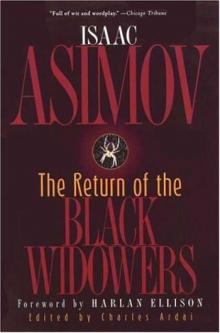 The Return of the Black Widowers
The Return of the Black Widowers The Stars, Like Dust
The Stars, Like Dust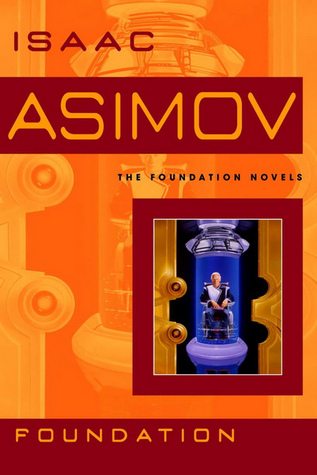 Foundation
Foundation David Starr Space Ranger
David Starr Space Ranger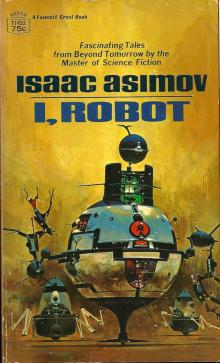 I, Robot
I, Robot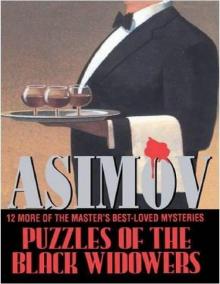 Puzzles of the Black Widowers
Puzzles of the Black Widowers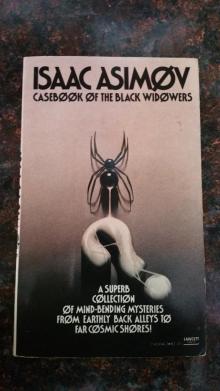 Casebook of the Black Widowers
Casebook of the Black Widowers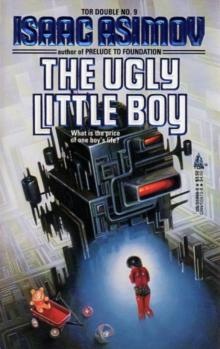 The Ugly Little Boy
The Ugly Little Boy Azazel
Azazel Pebble in the Sky
Pebble in the Sky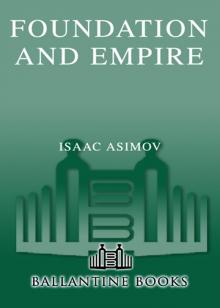 Foundation and Empire
Foundation and Empire The Complete Robot
The Complete Robot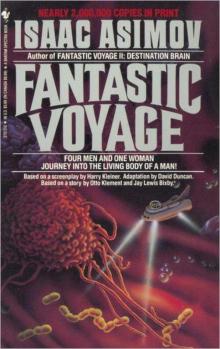 Fantastic Voyage
Fantastic Voyage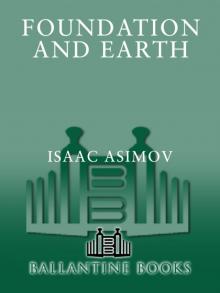 Foundation and Earth
Foundation and Earth The Naked Sun
The Naked Sun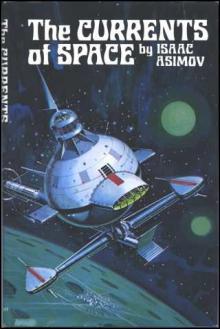 The Currents of Space
The Currents of Space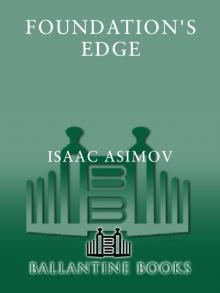 Foundation's Edge
Foundation's Edge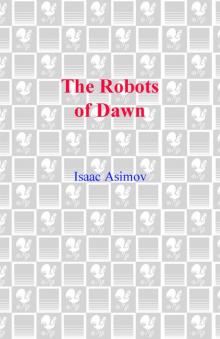 The Robots of Dawn
The Robots of Dawn Nightfall
Nightfall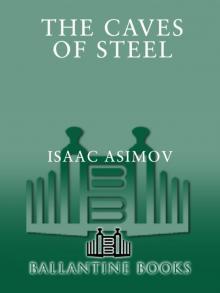 The Caves of Steel
The Caves of Steel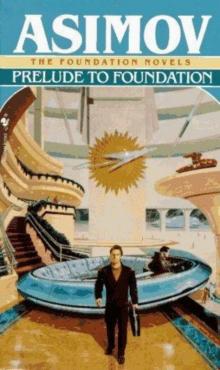 Prelude to Foundation
Prelude to Foundation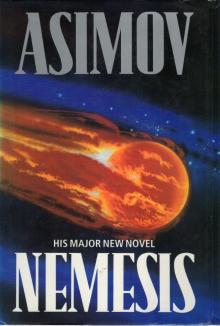 Nemesis
Nemesis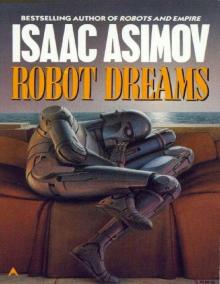 Robot Dreams
Robot Dreams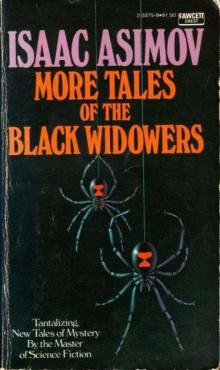 More Tales of the Black Widowers
More Tales of the Black Widowers The Complete Stories
The Complete Stories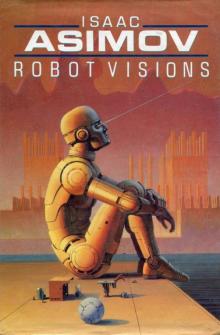 Robot Visions
Robot Visions Lucky Starr And The Moons of Jupiter
Lucky Starr And The Moons of Jupiter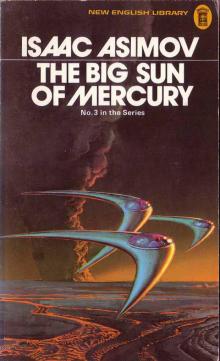 Lucky Starr and the Big Sun of Mercury
Lucky Starr and the Big Sun of Mercury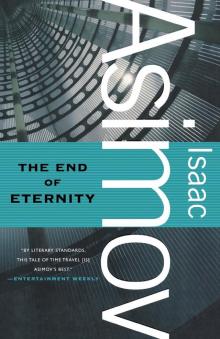 The End of Eternity
The End of Eternity The Bicentennial Man and Other Stories
The Bicentennial Man and Other Stories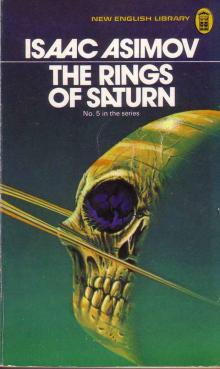 Lucky Starr And The Rings Of Saturn
Lucky Starr And The Rings Of Saturn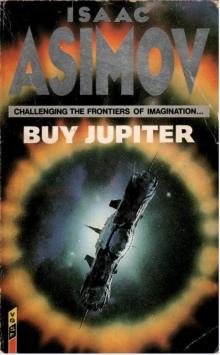 Buy Jupiter and Other Stories
Buy Jupiter and Other Stories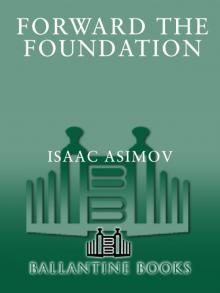 Forward the Foundation
Forward the Foundation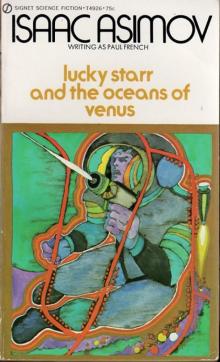 Lucky Starr and the Oceans of Venus
Lucky Starr and the Oceans of Venus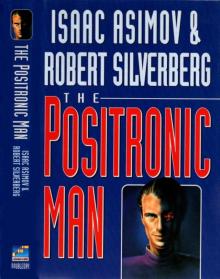 The Positronic Man
The Positronic Man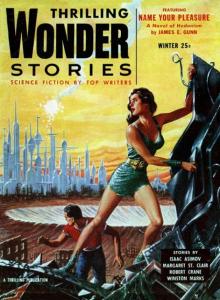 The Portable Star
The Portable Star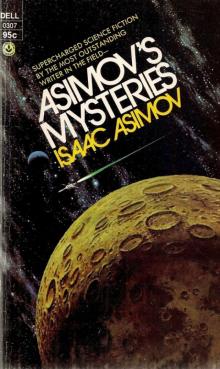 Asimovs Mysteries
Asimovs Mysteries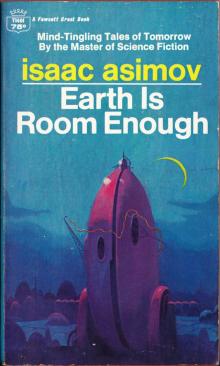 Earth Is Room Enough
Earth Is Room Enough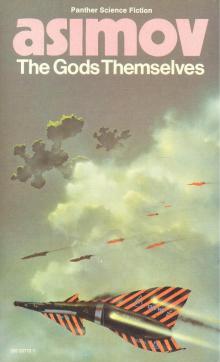 The Gods Themselves
The Gods Themselves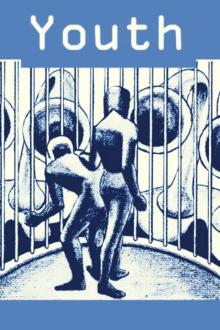 Youth
Youth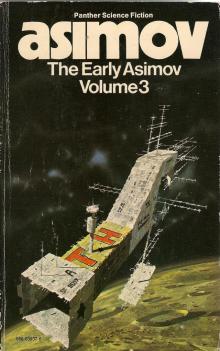 The Early Asimov Volume 3
The Early Asimov Volume 3 The Winds of Change and Other Stories
The Winds of Change and Other Stories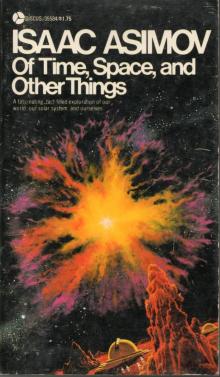 Of Time, Space, and Other Things
Of Time, Space, and Other Things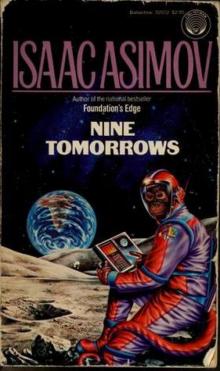 Nine Tomorrows
Nine Tomorrows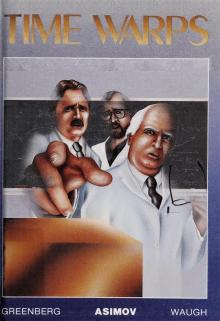 Time Warps
Time Warps Robots and Empire
Robots and Empire Young Star Travelers
Young Star Travelers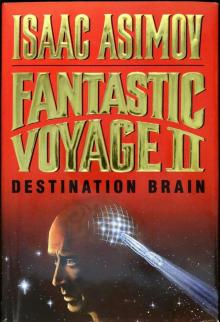 Fantastic Voyage II: Destination Brain
Fantastic Voyage II: Destination Brain Second Foundation
Second Foundation The Rest of the Robots
The Rest of the Robots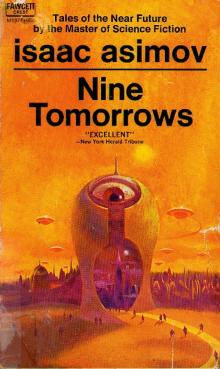 NINE TOMORROWS Tales of the Near Future
NINE TOMORROWS Tales of the Near Future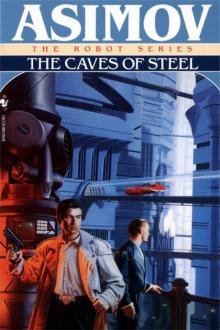 Daneel Olivaw 1 - The Caves of Steel
Daneel Olivaw 1 - The Caves of Steel THE BICENTENNIAL MAN
THE BICENTENNIAL MAN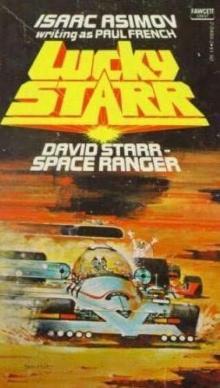 David Starr Space Ranger (lucky starr)
David Starr Space Ranger (lucky starr)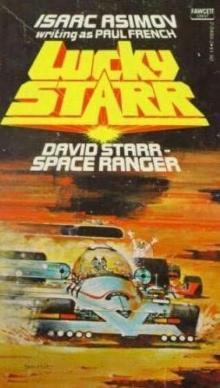 David Starr Space Ranger (ls)
David Starr Space Ranger (ls)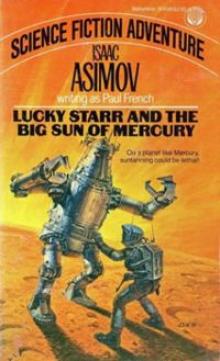 Lucky Starr And The Big Sun Of Mercury ls-4
Lucky Starr And The Big Sun Of Mercury ls-4 Pebble In The Sky te-1
Pebble In The Sky te-1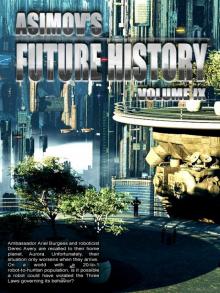 Asimov’s Future History Volume 9
Asimov’s Future History Volume 9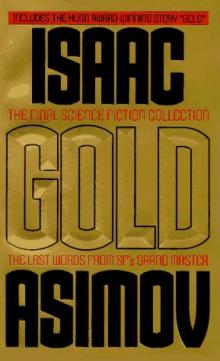 Gold: The Final Science Fiction Collection
Gold: The Final Science Fiction Collection Foundation and Earth f-7
Foundation and Earth f-7 Asimov's New Guide to Science
Asimov's New Guide to Science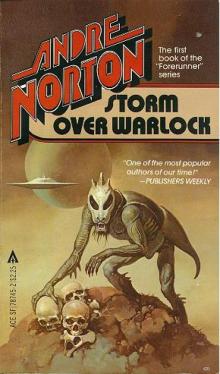 STORM OVER WARLOCK
STORM OVER WARLOCK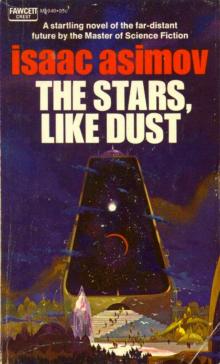 Stars, Like Dust
Stars, Like Dust Norby The Mixed-Up Robot
Norby The Mixed-Up Robot Found!
Found!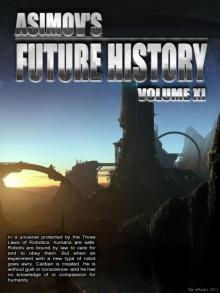 Asimov’s Future History Volume 11
Asimov’s Future History Volume 11 Second Foundation f-5
Second Foundation f-5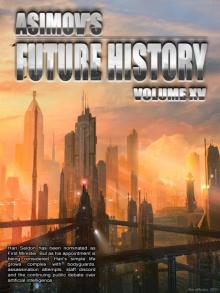 Asimov’s Future History Volume 15
Asimov’s Future History Volume 15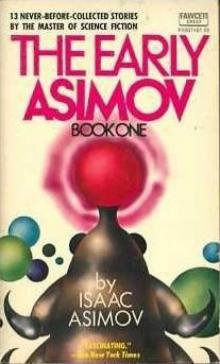 The Early Asimov. Volume 1
The Early Asimov. Volume 1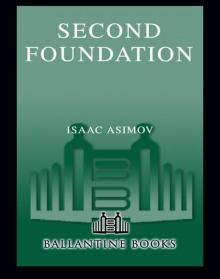 Secound Foundation
Secound Foundation Daneel Olivaw 3 - The Robots of Dawn
Daneel Olivaw 3 - The Robots of Dawn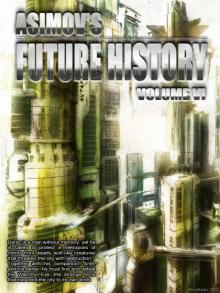 Asimov’s Future History Volume 6
Asimov’s Future History Volume 6 The Early Asimov. Volume 2
The Early Asimov. Volume 2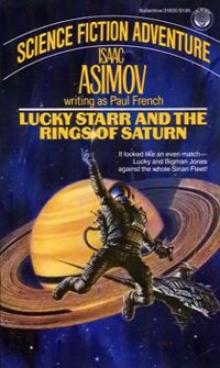 Lucky Starr And The Rings Of Saturn ls-6
Lucky Starr And The Rings Of Saturn ls-6 100 Malicious Little Mysteries
100 Malicious Little Mysteries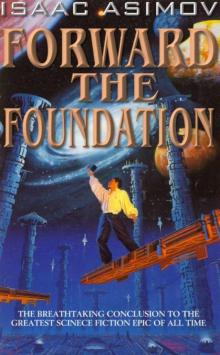 Forward the Foundation f-2
Forward the Foundation f-2 I.Asimov: A Memoir
I.Asimov: A Memoir Foundation's Edge f-6
Foundation's Edge f-6 Lucky Starr and the Pirates of the Asteroids ls-2
Lucky Starr and the Pirates of the Asteroids ls-2 Robot City 1 & 2
Robot City 1 & 2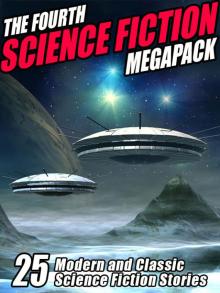 The Fourth Science Fiction Megapack
The Fourth Science Fiction Megapack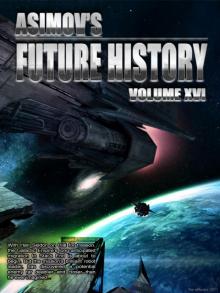 Asimov’s Future History Volume 16
Asimov’s Future History Volume 16 The Dim Rumble
The Dim Rumble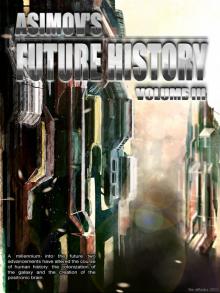 Asimov's Future History Volume 3
Asimov's Future History Volume 3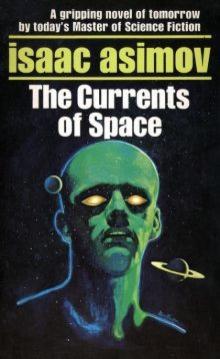 The Currents Of Space te-3
The Currents Of Space te-3 Asimov’s Guide To Shakespear. Volume 1
Asimov’s Guide To Shakespear. Volume 1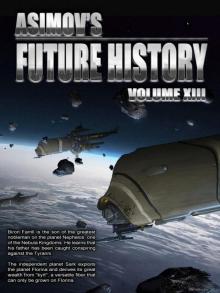 Asimov’s Future History Volume 13
Asimov’s Future History Volume 13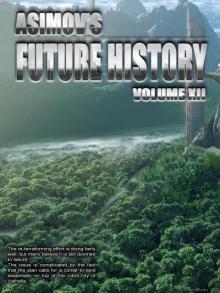 Asimov’s Future History Volume 12
Asimov’s Future History Volume 12 The Secret Sense
The Secret Sense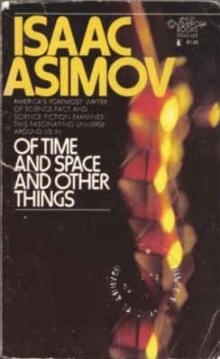 Of Time and Space and Other Things
Of Time and Space and Other Things Norby tnc-2
Norby tnc-2 Norby The Mixed-Up Robot tnc-1
Norby The Mixed-Up Robot tnc-1 Misbegotten Missionary
Misbegotten Missionary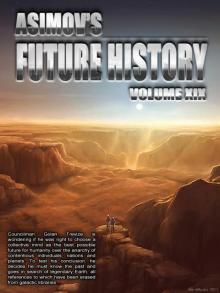 Asimov’s Future History Volume 19
Asimov’s Future History Volume 19 Fantastic Voyage II: Destination Brain fv-2
Fantastic Voyage II: Destination Brain fv-2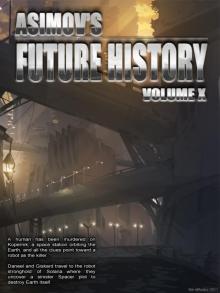 Asimov’s Future History Volume 10
Asimov’s Future History Volume 10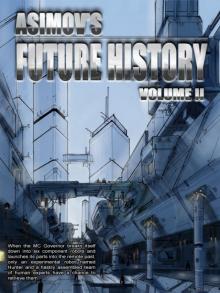 Asimov's Future History Volume 2
Asimov's Future History Volume 2 Feeling of Power
Feeling of Power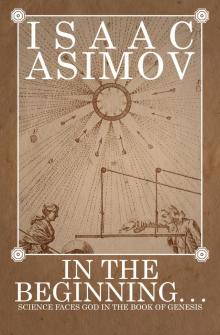 In the Beginning
In the Beginning The Caves of Steel trs-1
The Caves of Steel trs-1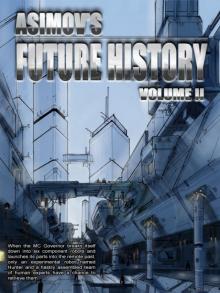 Asimov's Future History Vol 2
Asimov's Future History Vol 2 Caliban c-1
Caliban c-1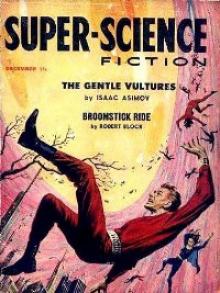 The Gentle Vultures
The Gentle Vultures Utopia c-3
Utopia c-3 Prelude to Foundation f-1
Prelude to Foundation f-1 Short Stories Vol.1
Short Stories Vol.1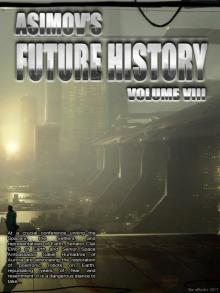 Asimov’s Future History Volume 8
Asimov’s Future History Volume 8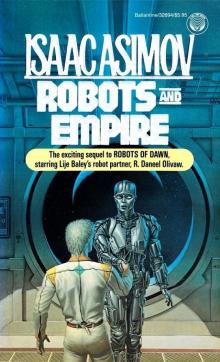 Daneel Olivaw 4 - Robots and Empire
Daneel Olivaw 4 - Robots and Empire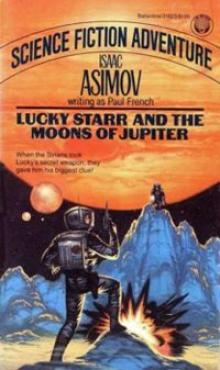 Lucky Starr The And The Moons of Jupiter ls-5
Lucky Starr The And The Moons of Jupiter ls-5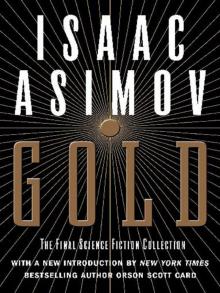 Gold
Gold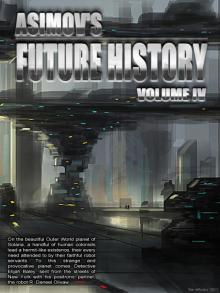 Asimov’s Future History Volume 4
Asimov’s Future History Volume 4 Foundation and Empire f-4
Foundation and Empire f-4 Potential
Potential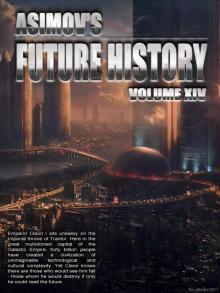 Asimov’s Future History Volume 14
Asimov’s Future History Volume 14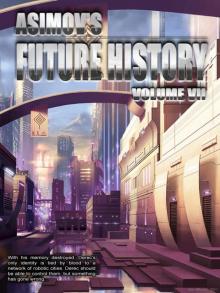 Asimov’s Future History Volume 7
Asimov’s Future History Volume 7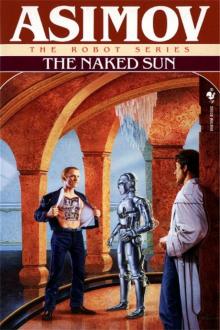 Daneel Olivaw 2 - The Naked Sun
Daneel Olivaw 2 - The Naked Sun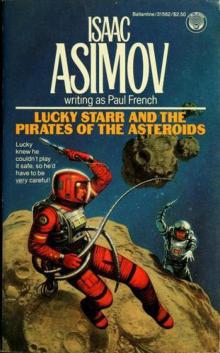 Lucky Starr and the Pirates of the Asteroids
Lucky Starr and the Pirates of the Asteroids Foundation f-3
Foundation f-3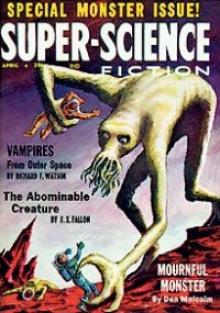 All the Troubles of the World
All the Troubles of the World Cleon the Emperor
Cleon the Emperor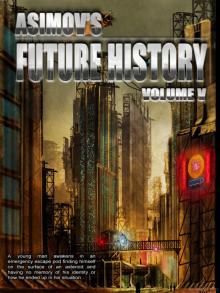 Asimov's Future History Volume 5
Asimov's Future History Volume 5 Asimov’s Future History Volume 20
Asimov’s Future History Volume 20 Robots and Empire trs-4
Robots and Empire trs-4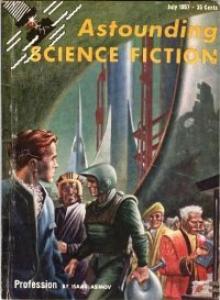 Profession
Profession It's Been a Good Life
It's Been a Good Life The Robots of Dawn trs-3
The Robots of Dawn trs-3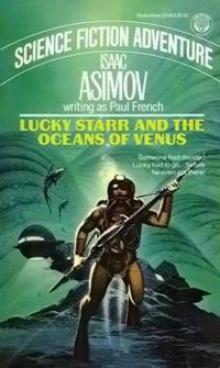 Lucky Starr And The Oceanf Of Venus ls-3
Lucky Starr And The Oceanf Of Venus ls-3 The Naked Sun trs-2
The Naked Sun trs-2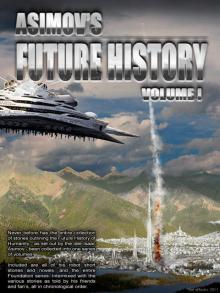 Asimov's Future History Volume 1
Asimov's Future History Volume 1